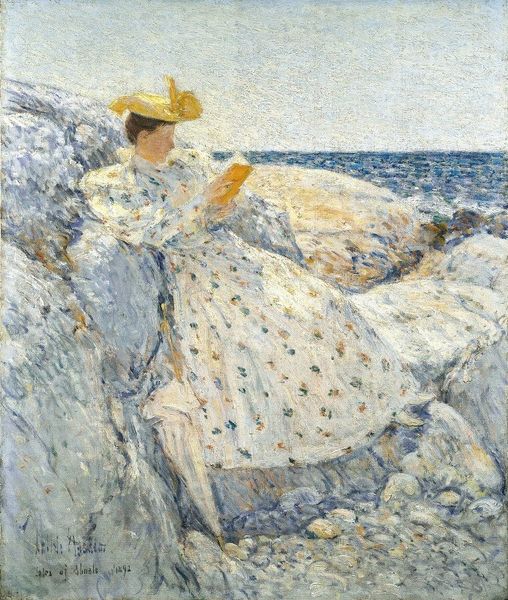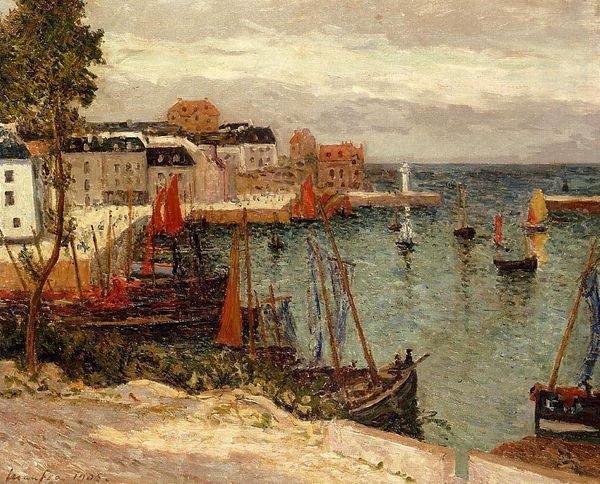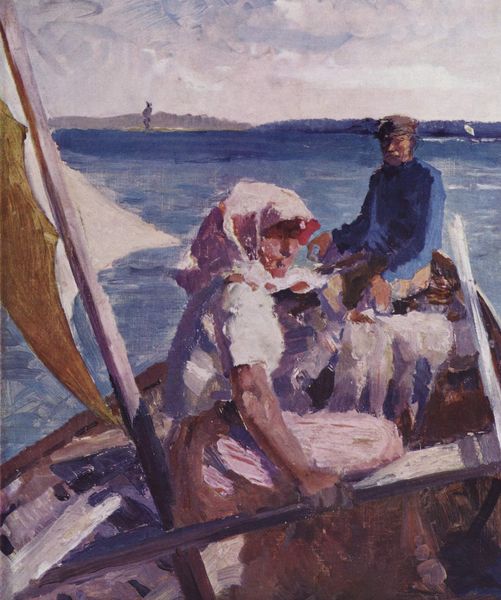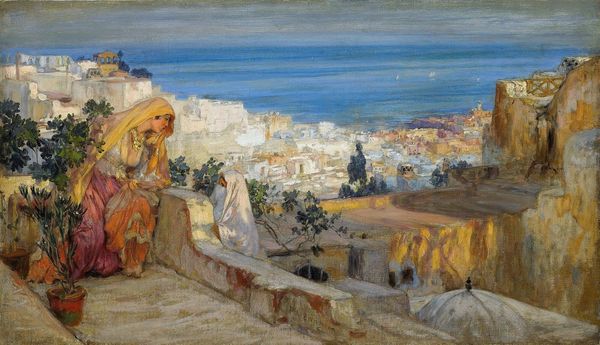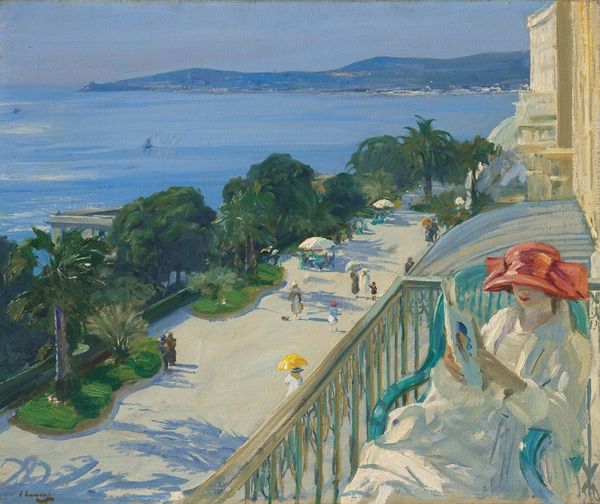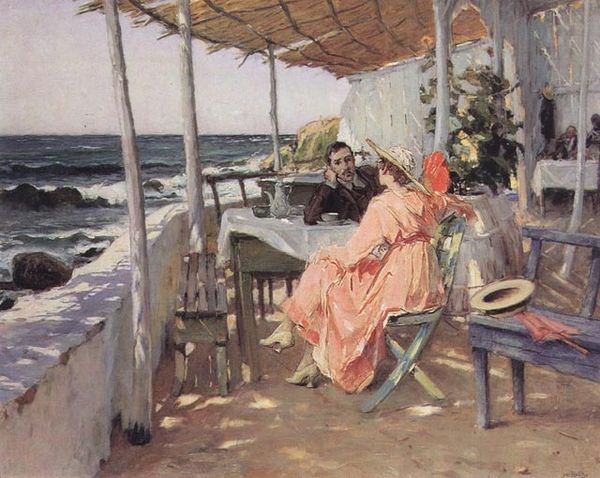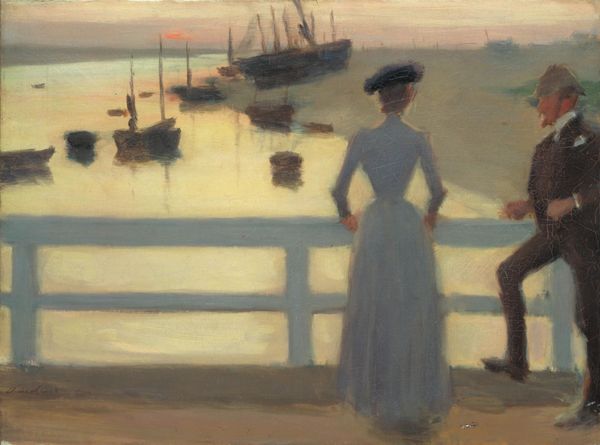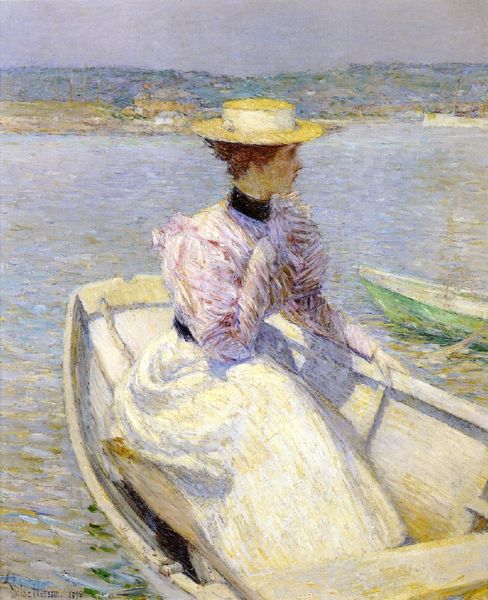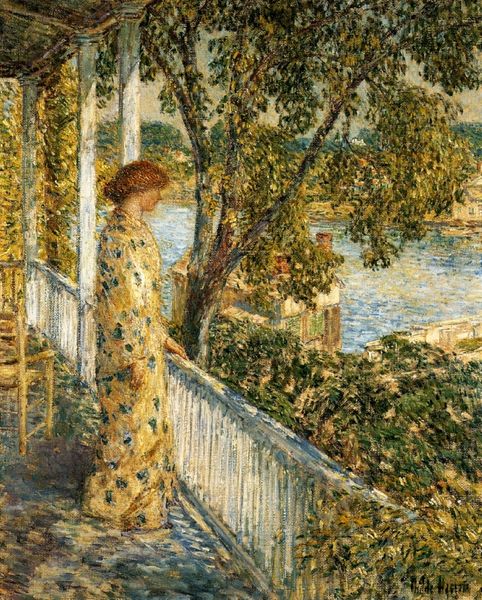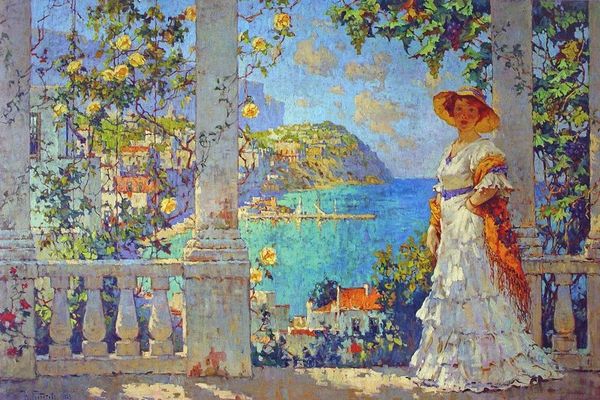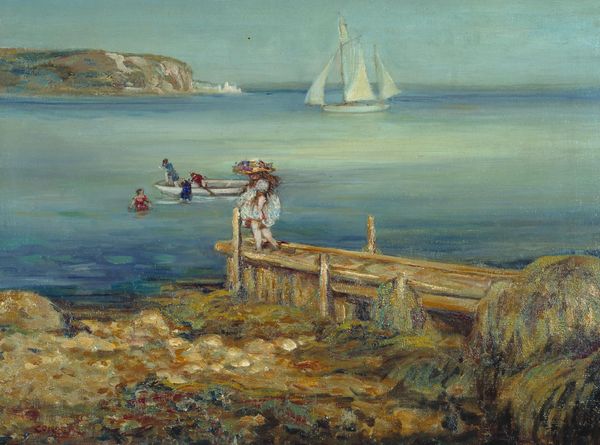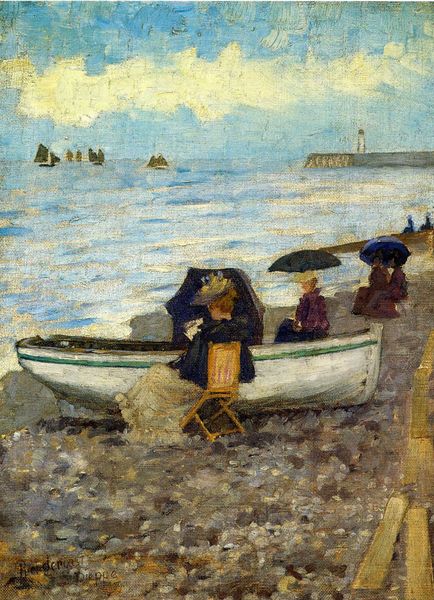
Copyright: Public domain
Curator: Here we have Konstantin Korovin's "Gursuf," painted in 1914. What are your immediate thoughts? Editor: It feels…melancholy, despite the bright palette. There’s a stillness, almost a silence, radiating from the canvas. It’s beautiful, of course, but carries a palpable sense of isolation. Curator: Interesting. From a formal perspective, note the vigorous brushwork characteristic of Impressionism, yet pushed almost to the point of abstraction. The color choices create visual energy, an interesting contrast against your perceived mood. Look closely at the broken strokes of blues, greens and whites. Editor: Precisely. That fragmented style underscores the transient nature of the moment. Look at the woman – is she really present? Or just a ghost amidst the luxurious blooms beside her? It's worth asking how notions of femininity might be shaping that melancholic air? Who would she be in that location? And for whom might she be performing her identity? Curator: These are compelling ideas. Let's refocus on the technical aspects. Korovin mastered "en plein air" painting. He wasn't afraid to tackle transient moments, specifically rendering atmosphere, light, and its effect on surfaces. It's clear to see in the way he evokes light on the sea, and across the pale building materials. Editor: Of course. But, let's remember that this was 1914 – the precipice of the First World War. Could that “melancholy”, be premonitory dread about that particular social and cultural moment, captured through the setting and posture of that woman? Curator: Perhaps. Whether intentional or not, art has the capability to echo deeper societal concerns and, yet the visual elements create undeniable artistic presence, Editor: And these visual elements shape meaning, they don't exist in a vacuum. Curator: A stimulating conversation that has indeed shifted my interpretation, broadening my appreciation of Korovin's Gursuf, from mere stylistic assessment to more relevant discourse. Editor: It reminds us that a dialogue between our contemporary lives and history allows the artworks of the past to breathe anew.
Comments
No comments
Be the first to comment and join the conversation on the ultimate creative platform.
